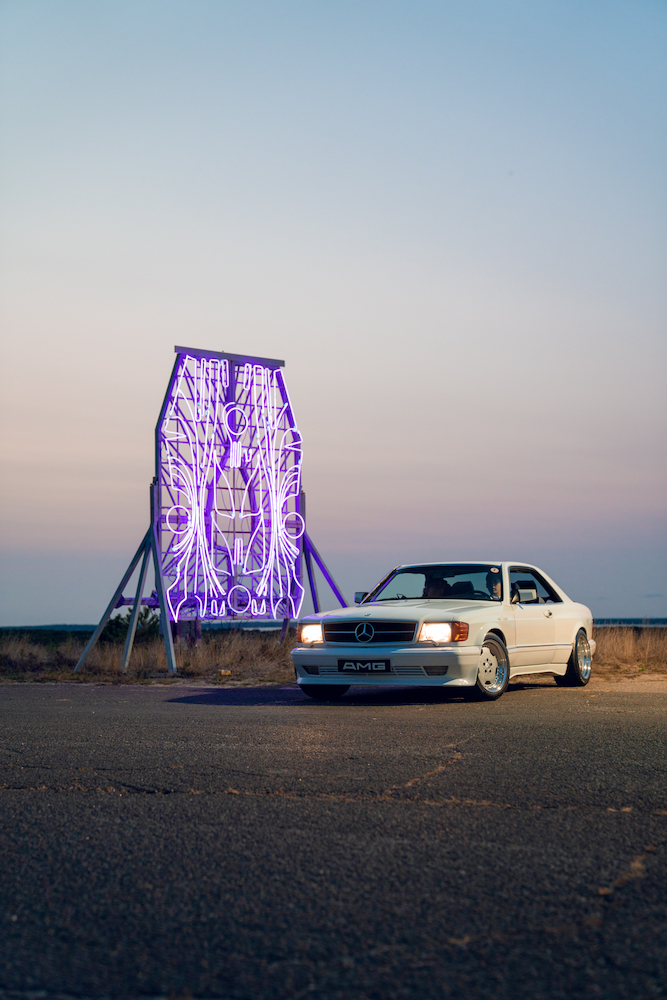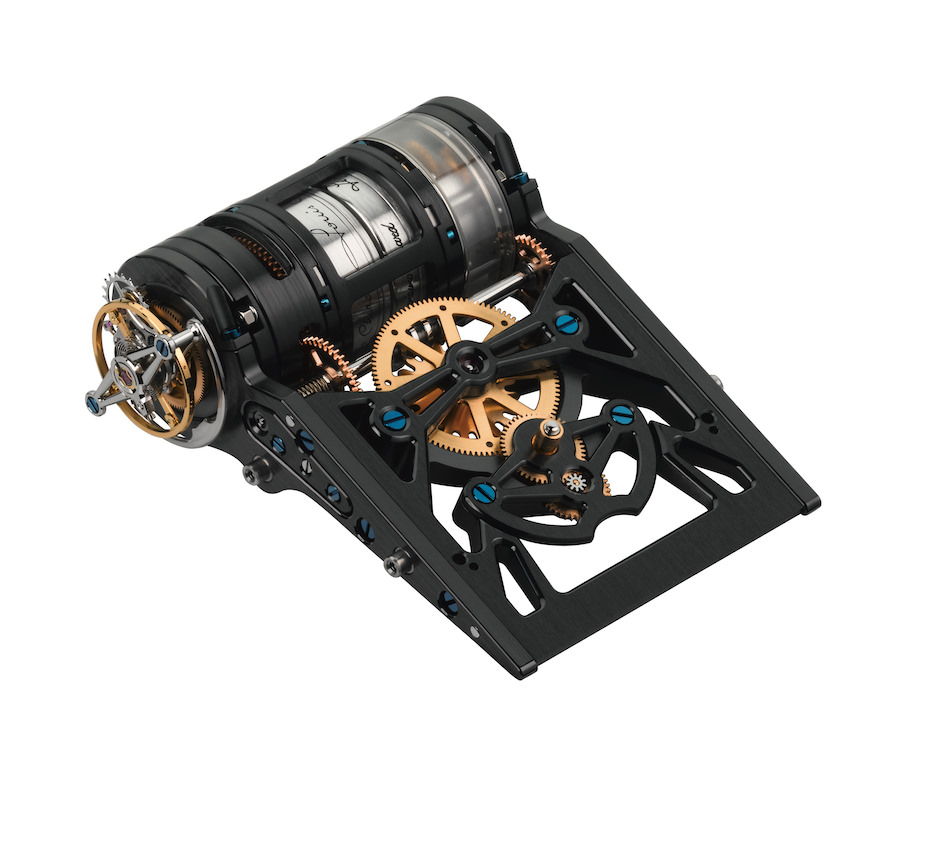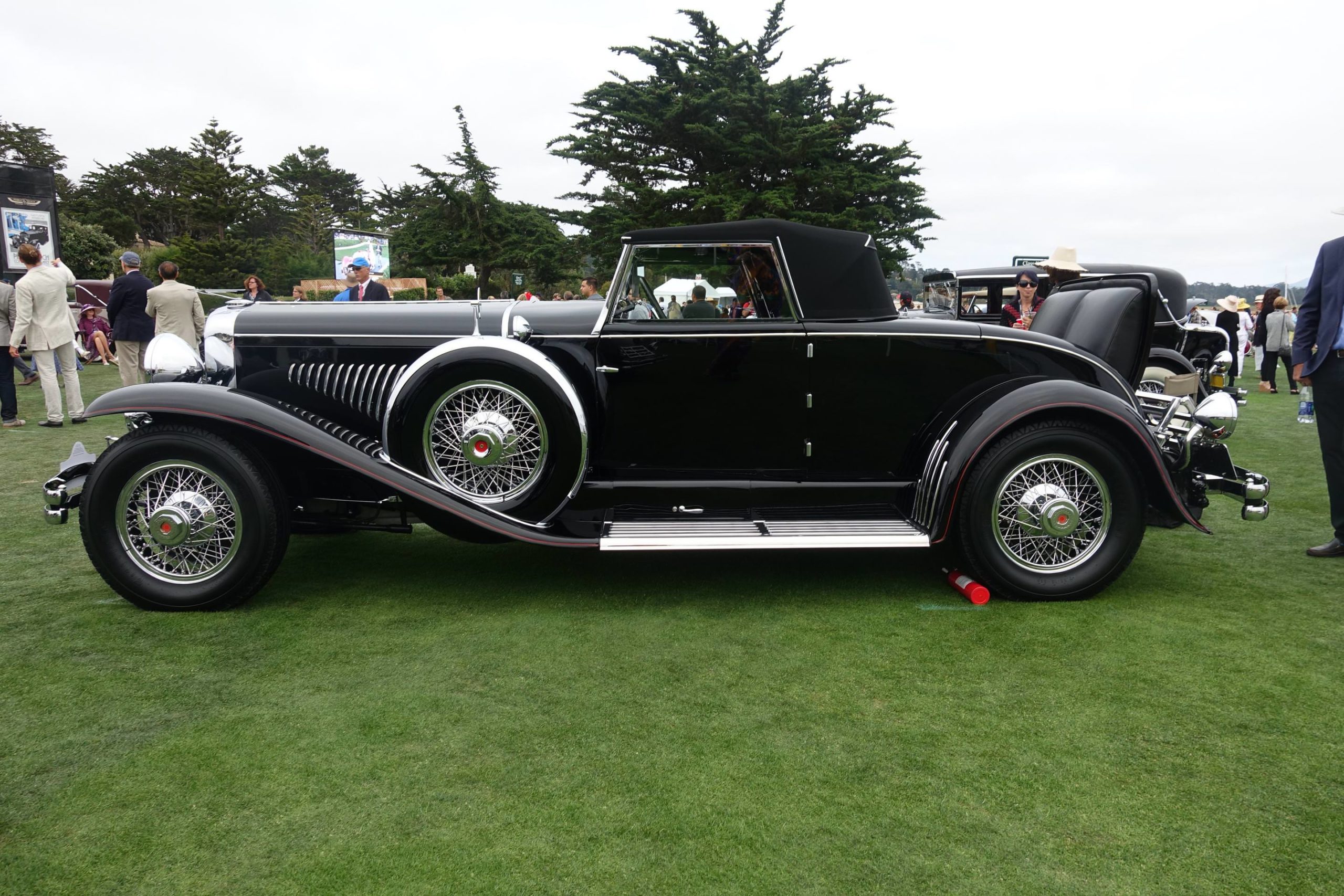In August at Monterey Car Week in California, Bugatti debuted its newest luxury model, the Chiron, in the United States. The annual on-the-lawn presentation of automobiles for Monterey Car Week is among the world’s most reputable and worthy car and driver events. There at The Quail and the Pebble Beach Concourse d’Elegance, crowds gathered to see the ultrafast Chiron’s reserved exterior, which exceeded all expectations, even beyond Bugatti’s previous offering, the Veyron.
At the time, Bugatti president Wolfgang Dürheimer said, “The development brief for the Chiron can be summarized in one sentence and is probably the shortest in the history of the automobile. We want to make the best significantly better. The Chiron will set new standards in every respect.”
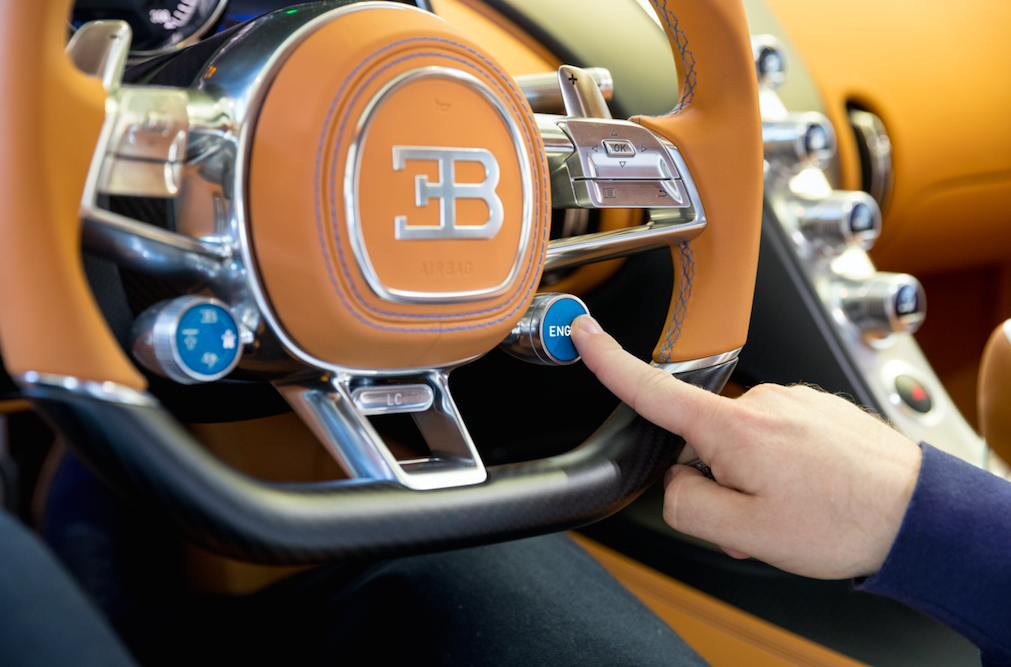
Courtesy of Bugatti.
Just weeks before we found ourselves at Pebble Beach, we visited Molsheim—a small town just over Germany’s Black Forest border in northeastern France—to see the new model before it was widely released to the public. There, the Bugatti grounds include Ettore Bugatti’s Château St. Jean, which was built in 1857 and is home to the family’s historic documents and art collection, a lush greenhouse, the Remise Süd (which hosts the customer lounge and a design studio), where just 20 crewmen assemble the cars.
Upon arrival, we were greeted by the Molsheim base’s Head of Tradition Julius Kruta—two key members who know extensive details about the Bugatti family and history of the brand. Bugatti is known as the most exclusive automobile producer in the world, and its high-performance beginnings date back to 1909, when Italian-born Ettore Bugatti moved to France to start making cars.
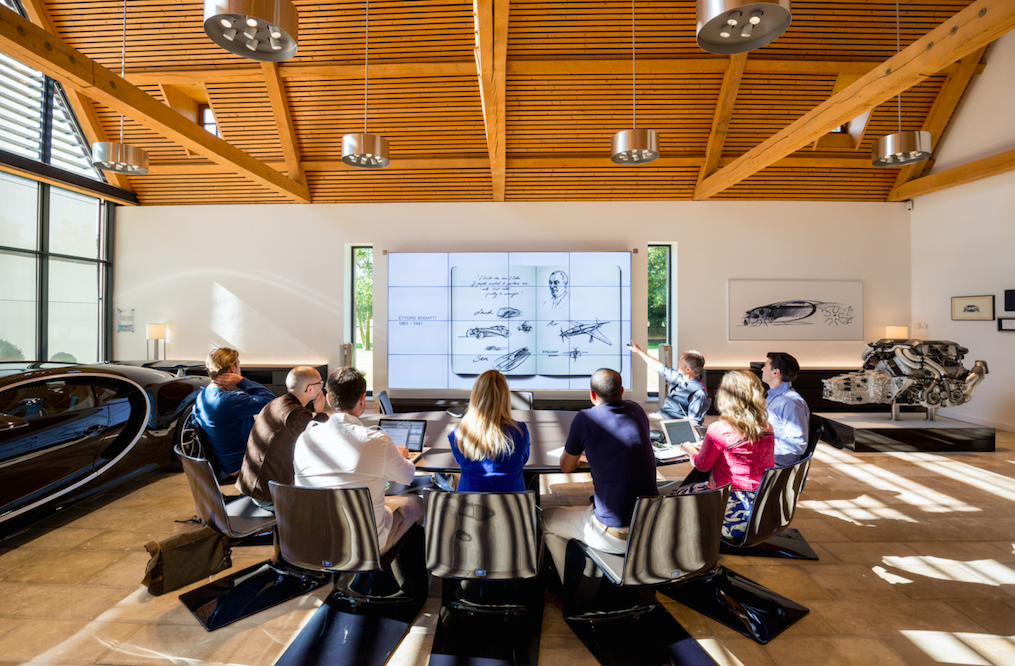
Courtesy of Bugatti.
Coming from a family of artists, Bugatti took pride in the beauty of the car’s design, and provided automobiles for many national Grand Prix–winning racers thereafter. We learned the Chiron was named after the legendary Louis Chiron, the most successful Bugatti racing driver in the world during his time, who was known for winning many major Grand Prix races for the brand in the 1920s and ’30s. “In the mid-1920s, Ettore Bugatti noticed him, and thought he was a noble person, so he hired him for his racing team. He won the Grand Prix in France five times, he won his home Grand Prix in 1931, he won in a Type 51 . . . In 1955, he was 55 or 56 years old, and he came in sixth!” said Kruta.
“But why is Bugatti here in France? Well, originally, this was Germany,” said Kruta, explaining that between 1871 and 1914 Alsace was a part of Germany. During that time, before the use of sponsoring in the late 1960s, countries in national races painted their cars to represent their country. “America was a blue car, England was a green car, Germany was a white car, France was a blue car, Italy was red . . . After World War I, Alsace became part of France, and the cars became blue. But the strongest fans and the most faithful clients of the brands were the British, so there were many Bugattis in green. The first [winner] for the Grand Prix was won by a green Bugatti—Mr. Williams was an Englishman. So Bugatti is a French brand today, but it doesn’t get more European.” Since then, clients from all over the world have been reveling in its progressive designs and top-notch speedometer year after year—regardless of color, and for both the speed and the beauty.
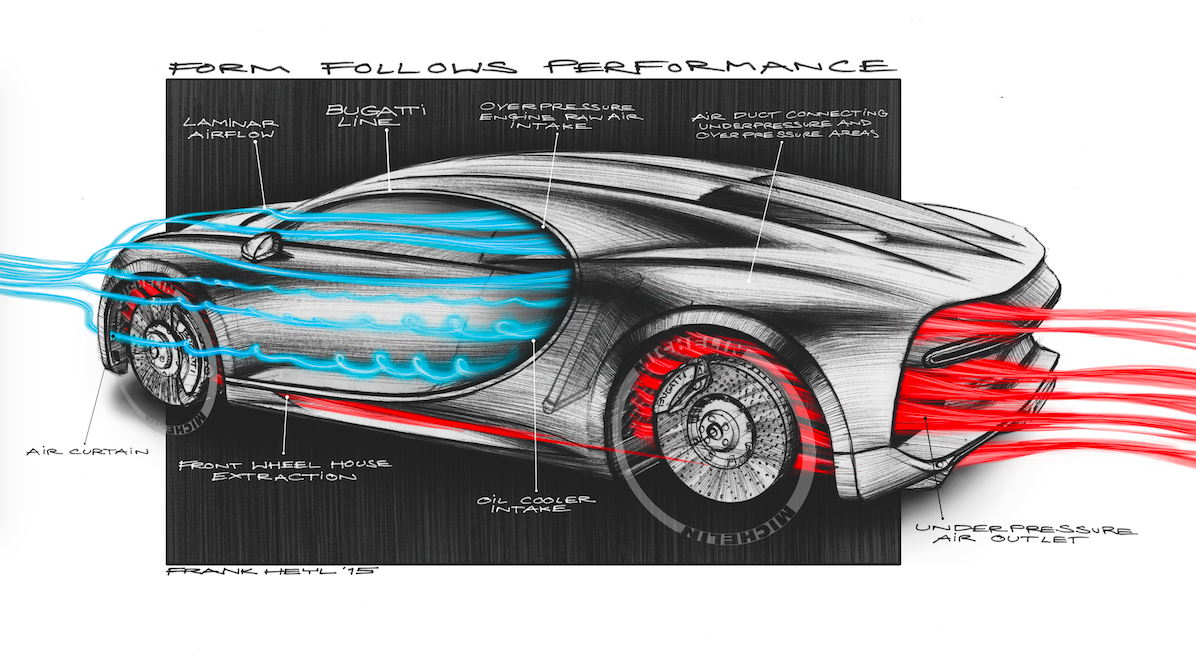
Courtesy of Bugatti.
We next met the brand’s designers, including Director of Design Achim Anscheidt, who escorted us to the design center to learn the basics of the new Chiron. Limited to just 500 units, it is currently the fastest super sports car in the world with 1,500 horsepower, hitting 62 miles per hour in less than 2.5 seconds, and reaching 261 miles per hour at its maximum top speed. The Chiron has five drive modes at the push of a button, including transport, EB (standing for Ettore Bugatti), autobahn, handling, and top speed, and the front lights are broken up into eight standalone bulbs, with four on each side—an “eight-eye face.” The recognizable “C” shape on the car’s side is also keenly representational for “Chiron.”
“You only have to look at the Chiron to know it couldn’t be anything but a Bugatti. From the legendary horseshoe at the front, to the duotone theme of the side and top view, right the way through to that purposeful, powerful rear,” said Anscheidt. “The Bugatti line is by far the most distinctive element on the Chiron, representing the perfect example of the Bugatti design philosophy: Form follows performance.”
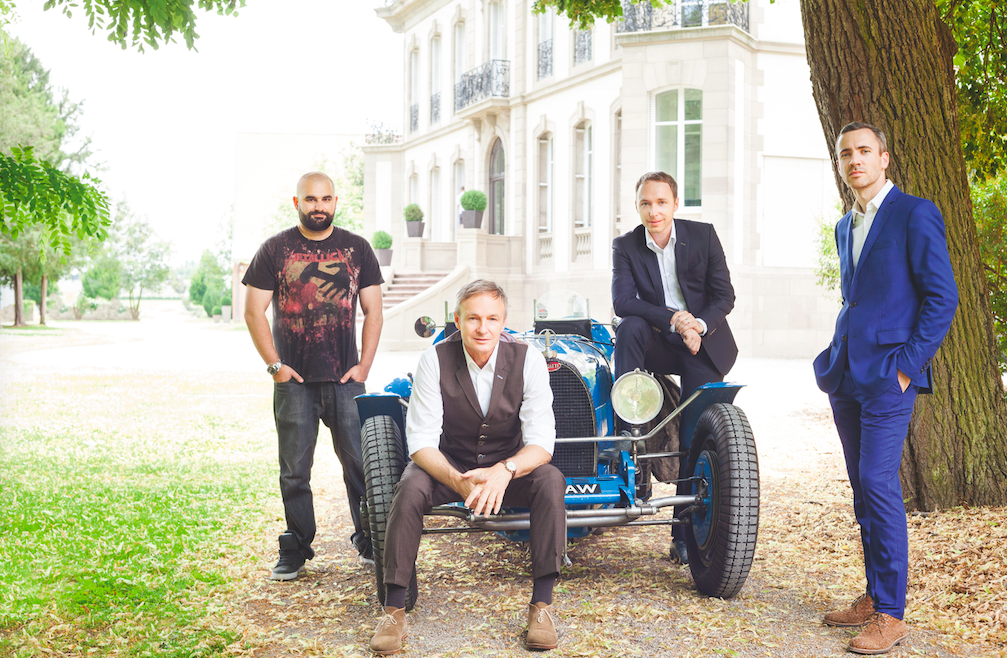
Bugatti’s Design Team, Courtesy of Bugatti.
After learning about the overall design approach, we were walked through filling out a configuration sheet, just as a customer would, selecting from a series of interior and exterior colors and materiality, including embroidery, engine, mirror, wheel, and brake selections. In the showroom, we saw the Chiron’s facade gleaming in a striking dual tone of turquoise carbon with aluminum signature lines and horseshoes. Sport seats showed fine stitching, and the wing mirrors and engine covers matched the brake calipers. From an array of new colors and tones, we got an inside look at how to mix and match the car’s details for a glorious end product.
Next, we entered the engineering facility, where we met the engineering team who gave us a look at the Chiron from the inside out. Hoisted up on tabletops were the Chiron’s parts, and we got a closer look at the assembly of those parts as we walked throughout the facility while the team put the car together. Due to the sheer force of the Chiron, the engineering space had to be renovated to begin testing this year—the rolling road test bench in the back of the facility was simply not equipped to handle the powerful exertion of the new car. From there, it must be tested on an airplane runway, rather than on a racetrack, for the full allotment of acceleration and stop-time needed.
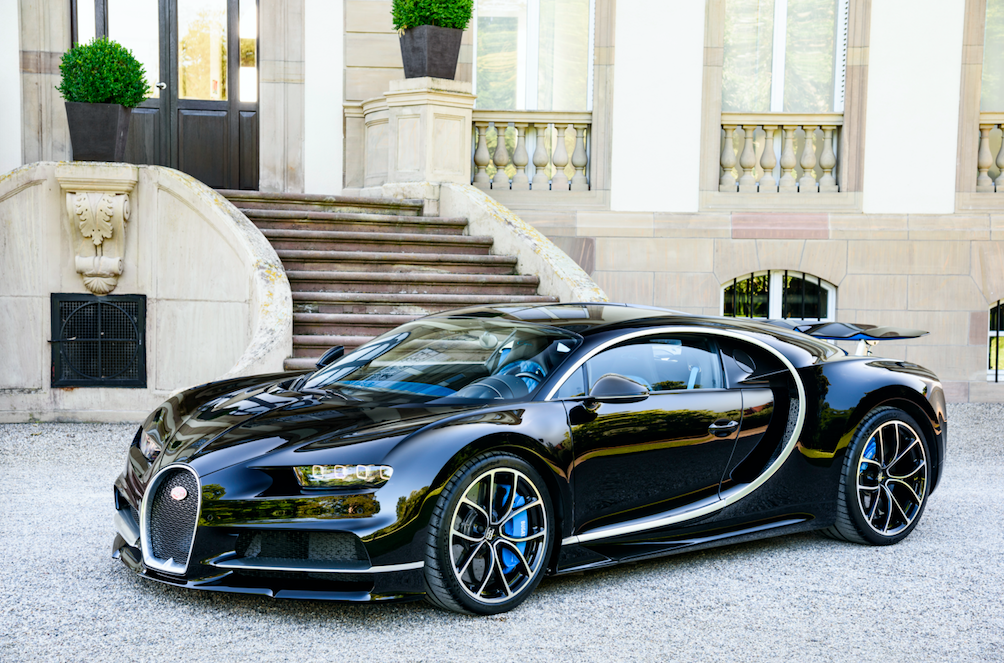
Courtesy of Bugatti.
Several weeks later at Pebble Beach, Bugatti showed its concept car from last year, the Vision Gran Turismo, which created quite a stir alongside the Chiron. Originally and exclusively designed for the PlayStation videogame series “Gran Turismo Sport,” the car is a tribute to fans and a glimpse into Bugatti’s design language, which now encompasses the Chiron.
As Dürheimer and the Vision Gran Turismo suggested, the client was the driving force behind Bugatti’s offerings, telling us, “We will continue to produce the world’s most powerful, fastest, most luxurious, and most exclusive production super sports car. This is the claim of Bugatti and our customers.”
This article is published in Whitewall’s winter 2017 Luxury Issue.




